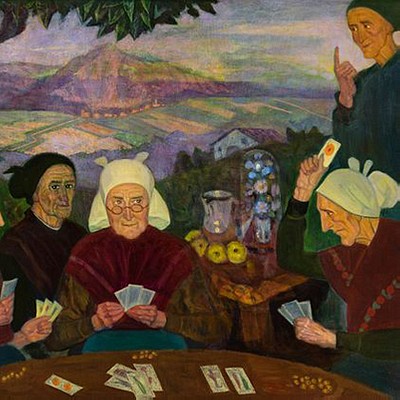DIONÍS BAIXERAS VERDAGUER (Barcelona, 1862 - 1943). "Port view". Oil on canvas.
Lot 75
About Seller
Setdart Auction House
Carrer Aragó 346
Barcelona
Spain
Setdart Subastas was born in 2004 and is currently the first online art auction in Spain with solidity, prestige and reliability guaranteed by our more than 60,000 users. Setdart has a young, dynamic and enterprising team ready to successfully manage the purchase and sale of art works through custom...Read more
Estimate:
EUR€4,000 - EUR€5,000
$4,166.67 - $5,208.33
Absentee vs Live bid
Two ways to bid:
- Leave a max absentee bid and the platform will bid on your behalf up to your maximum bid during the live auction.
- Bid live during the auction and your bids will be submitted real-time to the auctioneer.
Bid Increments
| Price | Bid Increment |
|---|---|
| EUR€0 | EUR€10 |
| EUR€200 | EUR€25 |
| EUR€500 | EUR€50 |
| EUR€1,000 | EUR€100 |
| EUR€3,000 | EUR€200 |
| EUR€5,000 | EUR€500 |
| EUR€10,000 | EUR€1,000 |
| EUR€20,000 | EUR€2,000 |
| EUR€50,000 | EUR€5,000 |
About Auction
By Setdart Auction House
Dec 14, 2021
Set Reminder
2021-12-14 08:00:00
2021-12-14 08:00:00
America/New_York
Bidsquare
Bidsquare : 19th & 20th Century Fine Art
https://www.bidsquare.com/auctions/setdart-auction-house/19th-20th-century-fine-art-7992
Gaudi, Sorolla, Torres Garcia, Maclet, TSUGUHARU FOUJITA, Benjamin Palencia Setdart Auction House sofia@setdart.com
Gaudi, Sorolla, Torres Garcia, Maclet, TSUGUHARU FOUJITA, Benjamin Palencia Setdart Auction House sofia@setdart.com
- Lot Description
DIONÍS BAIXERAS VERDAGUER (Barcelona, 1862 - 1943). "Port view". Oil on canvas. Signed in the lower left corner. Measurements: 50 x 81 cm; 73 x 103 cm (frame). In this port scene, Baixeras transmits us a costumbrista image devoid of all folkloric eagerness. On the contrary, he captures the everyday moment charged with harshness, but also with poetry, with sailors repairing their boats on a cold winter morning. He also highlights the gradual remoteness of the boats, glimpsed through the humid atmosphere. All of this is resolved with his characteristic thick and emphatic brushstrokes. A disciple at the Escuela de la Lonja of Martí Alsina and, above all, of Antonio Caba, during his student years Baixeras received the nickname of "el medallas" (the medal winner), due to his ease in winning competitions. He exhibited for the first time in 1882, at the Sala Parés in Barcelona, and four years later he traveled to Paris, where he was enthusiastic about the peasant-themed realism of Millet and Bastien-Lepage. During these years he won awards at the Fine Arts Exhibitions of Madrid (1884, third medal) and Paris (1886, honorable mention). Back in Barcelona he made great compositions of historical character, such as those of the auditorium of the university (1888), those of the seminary (1904, destroyed in 1936) and those of the dome of the hall of Sant Jordi of the Generalitat (1928). In 1907 he made a series of drawings of documentary type, focused on the representation of the corners of Barcelona that would disappear with the construction of the Via Layetana, which earned him a prize from the City Council. In 1926 he joined the Royal Academy of Fine Arts of Sant Jordi, and was linked to the Artistic Circle of Sant Lluc since its foundation. During his last years he wrote some interesting memoirs, the original manuscript of which is currently preserved in the Academy of Sant Jordi. Baixeras devoted himself mainly to naturalistic painting, with marine or rural themes, in works that show a certain influence of the school of Olot. He meticulously elaborated his works in the workshop, so his previous drawings have much more freshness and interest. In 1908 he made a collection of drawings, of great documentary value, of places in old Barcelona that were to disappear during the construction of the Via Layetana. His work is preserved in the Metropolitan of New York, the Museum of Art and Industry of Roubaix (France) and the MACBA, among others.
- Shipping Info
-
In-house shipping available. Please inquire at admin@setdart.com.
-
- Buyer's Premium



 EUR
EUR CAD
CAD AUD
AUD GBP
GBP MXN
MXN HKD
HKD CNY
CNY MYR
MYR SEK
SEK SGD
SGD CHF
CHF THB
THB















